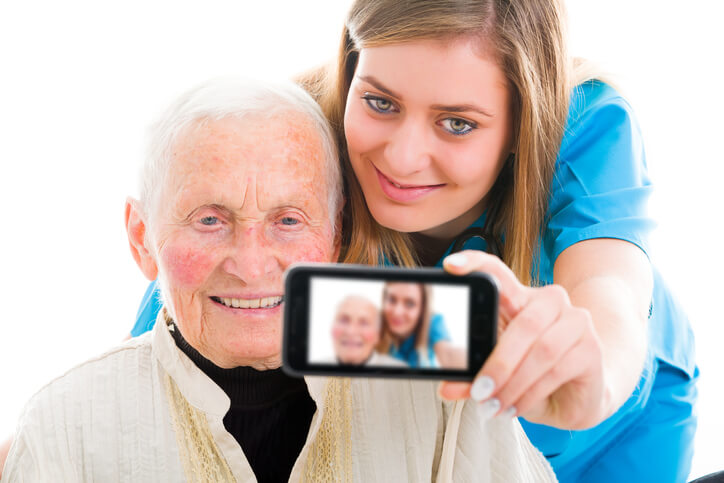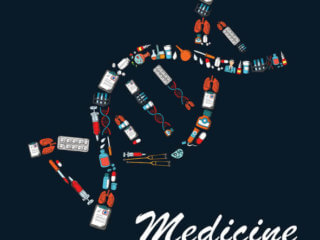5 ways in which digital health technology enhances patient engagement
Patient engagement in managing their own well-being
The importance of patient’s personal involvement and management of their behaviour during the course of treatment have been illustrated by the increased patient outcomes through patient engagement and patient empowerment. A significant role from digital healthcare technologies is currently being emerged to get the patients involved in the clinical decision-making process, improve communications between the patient and the service providers and to empower the patient to enhance their own well-being.
The phrases ‘patient engagement’ and ‘patient empowerment’ float around with different meanings. We have heard success stories of patient engagement as well as the darker sides of it too. Its potential in improving patient and clinical outcomes is endless. Thanks to the rapidly evolving digital health tools, many patients, especially patients suffering from chronic health concerns are increasingly aligned to use digital health tools such as mHealth apps and Telehealth tools.
A 2017 Patient Engagement Perspectives Study by CDW Healthcare reports that 70% of the patients showed a significant increase in patient engagement, most probably being motivated by the advancement in technologies, their meaningful use and the empowerment leading to the understanding of the importance of self-involvement in improving the overall well-being (CDW, 2017; Mack, 2017).
The same survey points out that patients prefer to use digital healthcare tools as patient engagement outlets such as online patient portals, emails, text messages, and mHealth applications (eg. smartphone apps). The major driving factors for such enthusiasm in using these technologies included saving time, fewer efforts in in-person appointments or travelling, long-distance healthcare, improvement in their overall health and satisfaction from being involved in their own healthcare.
In order to utilize digital healthcare technologies in patient engagement, it is necessary that the healthcare-IT professionals consider patients as ‘health consumers’ who are empowered or misled by the overflowing medical knowledge available through Dr Internet, highly demanding for personalized healthcare while being highly cost-conscious (HIMSS17, 2017).
Therefore, understanding the patient’s needs and desires as a health consumer will benefit immensely in developing better business models to engage patients through digital healthcare technologies. Some refer to this means of patient engagement as ‘digital engagement’ (Barello et al., 2016; Edited by Jan Oldenburg, 2012).
What are the ways in which patient engagement in the clinical decision-making process and their well-being are enhanced by the use of digital health technologies?
1. Better management of health records for patients with multiple health concerns or chronic diseases
In most cases of patients with multiple health concerns and/or chronic diseases such as cancer and associated complications, and diabetes, the management of a massive load of health records by themselves and keeping track of their medications and treatments can be quite challenging and frustrating for a person who is already burdened by a disease. This may even affect their health status and/or patient outcomes.
Fortunately, many digital health tools allow the patient to keep sufficient track of their health. They may do so by the use of mHealth apps, regulated access to their prescribed medicine information, entering their health data to online health portals, storage of lab results, results from digital diagnosis tools such as MRI scans and easy setting of appointments and follow-ups, and sending reminders for appointments and/or treatments.
2. Frequent communication with their provider leads to better health outcomes
Most patients have the perception that the more communication they have with their healthcare providers, the better the health outcomes. With the help and encouragement of the healthcare providers, patients are rapidly getting involved in making decisions regarding their health.
Studies suggest that the increased patient involvement in their own healthcare decisions have increased patient satisfaction, build up trust with the healthcare providers, reduction of fear and anxiety in patients regarding their health, and ultimately improvements in decision making leading to improved health outcomes (Vahdat et al., 2014).
Therefore, patient communication with healthcare providers in any form is encouraged, and digital healthcare tools have been shown to be creating the ‘virtual or digital’ patients’ (Sagar et al., 2016).
3. Provide means of communication and patient engagement for disabled patients
As digital healthcare tools even support the engagement of disabled individuals who have deficits in hearing, speaking or seeing or cognitive impairments that reduce the patient’s ability to communicate appropriately. Digital healthcare tools provide alternative communication methods such as typing or drawing tools for patients with speech impairments and visual tools for patients with hearing deficits (Edited by Jan Oldenburg, 2012).
4. Reduction in face-to-face communications and advanced remote-communications
One of the major challenges of getting proper treatments and care is the long waiting periods to get face-to-face appointments with the healthcare providers and time taken for follow-ups. Moreover, the difficulty of access to appropriate or the best healthcare providers for patients in rural areas, or other states or countries has reduced the opportunities for may patients to receive a proper course of treatment. The digital healthcare tools which include health apps, use of telehealth communication tools for consultations, texts, calls, emails or other online forms of setting appointments, sending reminders and doing follow-ups, have been able to bridge this gap (Hollis et al., 2015).
In fact, countries such as the UK have implemented systems like ‘Digital First’ to cease out unnecessary face-to-face interviews with healthcare providers and use digital tools to establish long-distance communications. These are quite effective, less time consuming and cost-effective.
5. The use of patient-generated data for personalized healthcare
The collection of healthcare data on a regular basis has been shown to provide patient-generated data that may improve the clinical decision process as well as track the prognosis. There are doctor-recommended health apps that patients often used to record their personal health data such as blood glucose levels and heart rate. Interestingly, there are apps that measure environmental data such as Allergist to report pollen data that are very useful for asthma patients and patients with compromised immune systems (Popolo, 2013).
HealthIT professionals are developing patient portals and user-friendly applications that support patient-generated health data and incorporate them in a meaningful way to the clinical decision-making process (Briefing, 2014).
Unfortunately, there are many challenges in digitally engaging the patients which are advancing with the rapidly evolving technology. The technology gap between the current generation and the older generations are quite high. Many older patients have difficulty or are hesitant to use digital tools due to low literacy or lack of confidence.
Another barrier to digital engagement is the trust issues regarding disclosing personal information to other parties and keeping their privacy and identity safe. It is my belief that the HealthIT field will be able to minimize the impact of these barriers in digital engagement and provide all patients with an opportunity to be empowered and engaged in their own well-being.

















